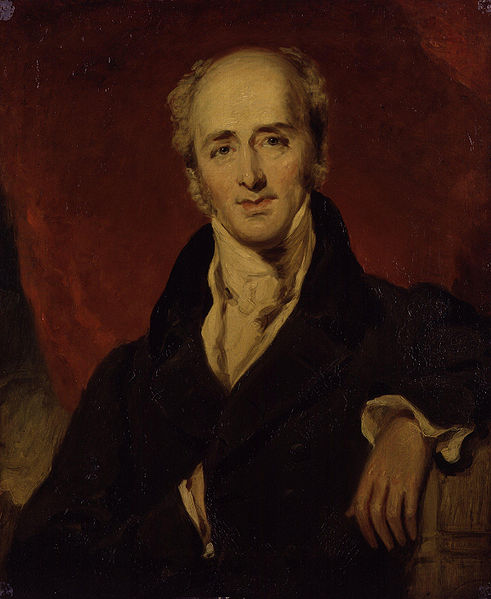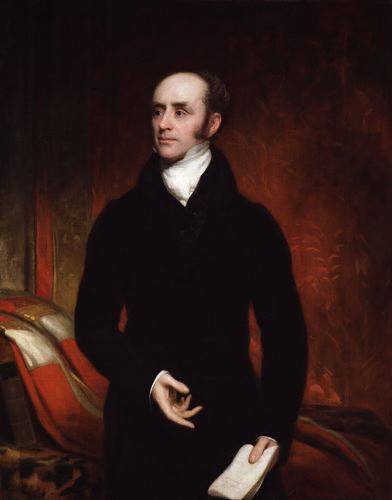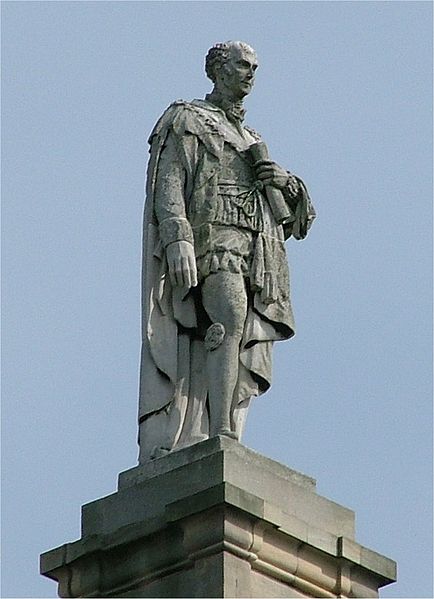<Back to Index>
- Natural Philosopher John Theophilus Desaguliers, 1683
- Architect Karl Friedrich Schinkel, 1781
- Prime Minister of the United Kingdom Charles Grey, 2nd Earl Grey, 1764



Charles Grey, 2nd Earl Grey, KG, PC (13 March 1764 – 17 July 1845), known as Viscount Howick between 1806 and 1807, was Prime Minister of the United Kingdom of Great Britain and Ireland from 22 November 1830 to 16 July 1834. A member of the Whig Party, he backed significant reform of the British government and was among the primary architects of the Reform Act 1832. In addition to his political achievements, Earl Grey famously gives his name to an aromatic blend of tea.
Descended from a long-established Northumbrian family seated at Howick Hall, Grey was the second but eldest surviving son of General Sir Charles Grey KB (1729–1807) and his wife, Elizabeth (1743/4–1822), daughter of George Grey of Southwick, co. Durham. He had four brothers and two sisters. He was educated at Eton and Trinity College, Cambridge, acquiring a facility in Latin and in English composition and declamation that enabled him to become one of the foremost parliamentary orators of his generation. Grey was elected to Parliament at the age of 22 in 1786. He became a part of the Whig circle of Charles James Fox, Richard Brinsley Sheridan, and the Prince of Wales, and soon became one of the major leaders of the Whig party. Grey was noted for advocating Parliamentary reform and Catholic emancipation. His affair with the Duchess of Devonshire, herself an active political campaigner, did him little harm although it nearly caused her to be divorced by her husband.
In 1806, Grey, by then Lord Howick owing to his father's elevation to the peerage as Earl Grey, became a part of the Ministry of All the Talents (a coalition of Foxite Whigs, Grenvillites, and Addingtonites) as First Lord of the Admiralty. Following Fox's death later that year, Howick took over both as Foreign Secretary and
as leader of the Whigs. The government fell from power the next year,
and, after a brief period as a Member of Parliament for Appleby from
May to July 1807, Howick went to the Lords, succeeding his father as
Earl Grey. He continued in opposition for the next 23 years. In 1830, the Whigs finally returned to power, with Grey as Prime Minister. His Ministry was a notable one, seeing passage of the Reform Act 1832, which finally saw the reform of the House of Commons, and the abolition of slavery throughout the British Empire in
1833. As the years had passed, however, Grey had become more
conservative, and he was cautious about initiating more far-reaching
reforms. In 1834 Grey retired from public life, leaving Lord Melbourne as his successor. Grey
returned to Howick but kept a close eye on the policies of the new
cabinet under Melbourne, whom he, and especially his family, regarded
as a mere understudy until he began to act in ways of which they
disapproved. Grey became more critical as the decade went on, being
particularly inclined to see the hand of Daniel O'Connell behind
the scenes and blaming Melbourne for subservience to the radicals with
whom he identified the Irish patriot. He made no allowances for
Melbourne's need to keep the radicals on his side to preserve his
shrinking majority in the Commons, and in particular he resented any
slight on his own great achievement, the Reform Act, which he saw as a
final solution of the question for the foreseeable future. Grey
spent his last years in contented, if sometimes fretful, retirement at
Howick, with his books, his family, and his dogs. He became physically
feeble in his last years and died quietly in his bed on 17 July 1845,
forty-four years to the day since going to live at Howick. He was buried in the church there on the 26th in the presence of his family, close friends, and the labourers on his estate. Earl Grey tea is named after Grey, a blend which uses bergamot oil to flavour the beverage. He is commemorated by Grey's Monument in the centre of Newcastle upon Tyne, which consists of a statue of Lord Grey standing atop a 41 m (130 ft) high column. The monument lends its name to Monument Metro station on the Tyne and Wear Metro located directly underneath.Grey Street in Newcastle upon Tyne is also indebted to Lord Grey for its name. Grey also gave his name to Grey College, Durham.
Grey married Mary Elizabeth Ponsonby (1776–1861), only daughter of William Ponsonby, 1st Baron Ponsonby and Hon. Louisa Molesworth in 1794. The marriage was a happy and fruitful one; between 1797 and 1819 the couple had eleven sons and five daughters. Mary
was frequently pregnant and during his absences in London or elsewhere
Grey had a series of affairs with other women. The first, most
notorious, and most significant, which antedated his engagement to his
future wife, was with Georgiana Cavendish, Duchess of Devonshire, whom he met at Devonshire House –
the centre of Whig society in London in the 1780s and 1790s – shortly
after his arrival in the capital as a young recruit to the House of
Commons. Impetuous and headstrong, Grey pursued Georgiana with
persistence until she gave in to his attentions. She became pregnant by
Grey in 1791, but she refused to leave her husband the duke, and live
with Grey, when the duke threatened that if she did so she would never
see their children again. She went abroad with Elizabeth Foster, and on 20 February 1792 at Aix-en-Provence, gave birth to a daughter who was given the name Eliza Courtney. After their return to England in September 1793 the child was taken to Fallodon and
brought up by Grey's parents as though she were his sister. This affair
was a significant step in the process by which he became a member of
the Whig party, led by Charles James Fox.